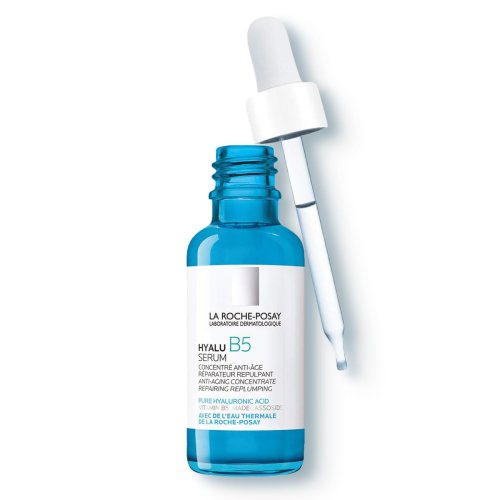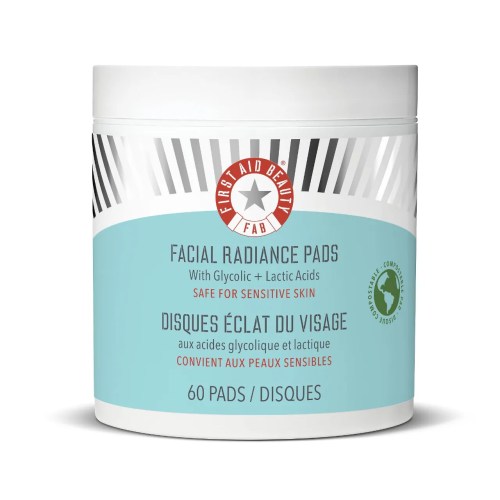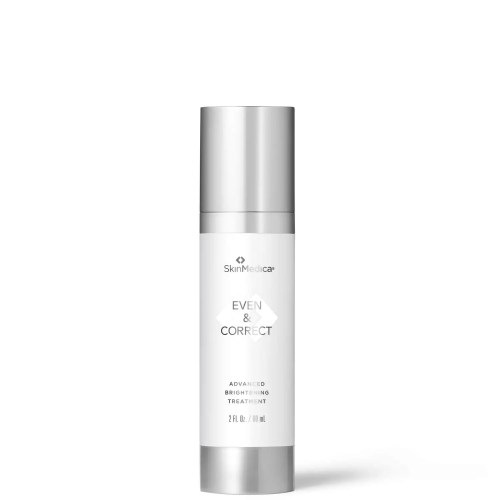Our editors independently select these products. Making a purchase through our links may earn Well+Good a commission
How To Reintroduce Skin-Care Actives Back Into Your Routine Postpartum, According to Dermatologists
Postpartum skincare can be complicated. Here, dermatologists reveal when to add active ingredients and treatments back to your routine.

You’re living your best beauty life, slathering your retinol to keep your skin plump, your benzoyl peroxide as breakouts pop up, your essential oil-spiked serums, and your fave SPF. Then, you pee on the stick, see two lines, and everything changes—including your skin-care regimen.
While there are established rules to follow during pregnancy for what you can and can’t use for your skin, we talk less about how to incorporate the active skin-care ingredients that you stop using back into your routine after the baby is here and you stop breastfeeding (if that’s something you decide to do). Add on top of that many in-office skin-care treatments like Botox, lasers, and facials that you nixed during pregnancy. Plus, the fact that your whole body has undergone, ya know, a life-changing event, and it can feel like you need a roadmap to get your skin-care regimen to the place it was pre-baby.
Given this, we talked to two top derms to help define the rules for postpartum skin care so you can know what to expect.
1. Know the facts about pregnancy skin care
“Excluding a few, like retinoids and hydroquinone, for example, most actives are actually quite safe in pregnancy,” says Rachel Westbay, MD, FAAD, a board-certified dermatologist at Marmur Medical in New York City. “I often tell my patients who are pregnant or planning a pregnancy that the list of ingredients you can safely use is actually much longer than the list of those you need to avoid.”
For starters, retinol, chemical sunscreens, and hydroquinone are off the table, and according to most professionals, Botox and lasers are, too. Aside from those, Dr. Westbay says everything else is a matter of the concentration of the ingredient in question in the product:
- Salicylic acid: Look for concentrations under two percent (like most found over the counter).
- Benzoyl peroxide: Over-the-counter concentrations of benzoyl peroxide are safe to use, “though higher concentrations are more likely to be irritating, particularly in light of the dryness many pregnancy and postpartum women are prone to,” she says.
- Mandelic, lactic and azelaic acid: Yes, safe. Go off.
- Glycolic acid: Look for low concentrations under 10 percent.
- Niacinamide: “Although no studies have been performed on pregnant women applying topical niacinamide, the limited amount of systemic absorption, paired with its relative safety even when taken orally in recommended daily allowance during pregnancy, renders it an ingredient generally considered safe,” she says.
- Sulfur: “A useful anti-inflammatory and antimicrobial ingredient in managing acne and rosacea, from washes to creams and spot treatments, are also considered safe in pregnancy,” she says.
2. Expect your skin to change
While you may have products saved on your top shelf from pre-pregnancy to address skin issues, they might not be what your skin needs postpartum (and PSA: they’re probably not still good).
“It certainly makes sense to keep a postpartum skin-care routine as simple as possible,” says ” says Hadley King, MD, a New York City dermatologist. “Focus on non-negotiables like physical sunscreen and moisturizers that contain humectants, emollients, and occlusives.”
Dr. Westbay says that hormonal fluctuations—a drop in progesterone and estrogen—are responsible for a good amount of changes to the skin, including melasma, hyperpigmentation, and acne. Couple that with increased water demands on the body due to breastfeeding, which can change the texture of skin and cause dryness. “Low levels of estrogen during the postpartum and breastfeeding period affect the production of hyaluronic acid, collagen, and elastin in the body,” she says. “Furthermore, these also contribute to transepidermal water loss, which leads to dehydration, flaky and dry skin.”
To address this, Dr. King suggests “focusing on humectants such as hyaluronic acid and polyglutamic acid to hydrate the skin, emollients like ceramides and squalane to support the skin barrier, and occlusives like petrolatum and beeswax to lock in moisture.”
3. Introduce potential irritators back s-l-o-w-l-y
When you decide that you want to start using harsher ingredients again, both doctors say to do so cautiously.
“Any time you are reintroducing retinoids or chemical exfoliants into your routine after taking a break, it’s best to proceed gradually,” says Dr. King. “I recommend starting with a small amount a couple of nights per week and increasing gradually as tolerated. Be sure to include plenty of ingredients that moisturize and support the skin barrier in order to decrease irritation as much as possible.”
As for how long post-pregnancy to begin? Dr. Westbay says that for retinol and hydroquinone, you should wait six to eight weeks. “This is because, during pregnancy, the body experiences hormonal changes that can cause the skin to become more sensitive, and using retinol [or hydroquinone] products too soon after giving birth can further irritate the skin,” she explains.
In the case of chemical SPFs, Dr. Westbay says that you can begin using them right after you give birth, but you may want to hold off until after you finish breastfeeding. “Since ingredients in chemical sunscreens have not yet been found to be 100 percent safe for babies, and there exists evidence that they may have effects on the endocrine system, your best bet is to continue using physical sunscreens while breastfeeding,” she says.
4. Go in for treatments as you wish
According to Dr. King, you can begin going back into the derm’s office for treatments when you finish breastfeeding. Some dermatologists say fillers are fine to continue during pregnancy, but if you abstained during pregnancy, you’re good to begin treatments as you wish once you’re done breastfeeding. Your dermatologist can help you devise a treatment plan based on your needs and wishes for different in-office technologies.
5. Steal Dr. Westbay’s favorite products postpartum
Want expert-approved picks? Here, Dr. Westbay shares her favorite products for hydration and hyperpigmentation, and reveals their benefits in her own words.

Drunk Elephant, B-Hydra Intensive Hydration Serum — $49.00
This ultra-hydrating serum uses sodium-hyaluronate, a version of hyaluronic acid that penetrates the skin well to deliver hydration. It also contains a unique blend of lentil-apple and watermelon complex, which helps diminish drabness, dryness, and the appearance of fine lines.

La Roche-Posay, Hyalu B5 Pure Hyaluronic Acid Face Serum — $40.00
I love this serum because, in addition to containing hyaluronic acid, it also contains vitamin B5 AKA pantothenic acid. Unlike other common moisturizing ingredients such as hyaluronic acid, panthenol has the added advantage of acting as both a humectant and an emollient, meaning it draws moisture from the atmosphere into the skin and then helps to retain it. These two ingredients’ synergy hydrates and enhances the skin barrier’s natural repair process.

MMSkincare, MM Revive Serum — $85.00
The innovative gel texture of this water-based formula hydrates and seals in moisture without any sticky feeling, thanks to the absence of silicone. It makes skin dewy, plump, and radiant and is an excellent primer for makeup application.
In addition to sodium hyaluronate, a deeply penetrating form of hyaluronic acid, it also contains powerful antioxidants activated by the heat in your skin to repair free radical damage (helpful in combating melasma), and Acetyl Hexapeptide-8, a neuropeptide that helps soften expression lines over time by inhibiting the release of neurotransmitters that control muscle contractions (which is a useful anti-aging replacement for retinol).

Sunday Riley, Good Genes Glycolic Acid Treatment — $85.00
This product containing seven percent glycolic acid can be used 1-2 times daily as a serum. This treatment utilizes tiny glycolic acid molecules that sink deep into the skin to break apart pore-clogging debris, revitalizing the appearance of dull, congested, and sun-damaged skin and improving the appearance of hyperpigmentation, enlarged pores, fine lines, and wrinkles.

First Aid Beauty, Facial Radiance Pads — $38.00
These daily treatment pads contain low concentrations of glycolic acid and pregnancy-safe lactic acid to safely and effectively exfoliate, tone, and brighten all skin types, including sensitive ones. Cucumber and Indian gooseberry help tone skin, while lemon peel and licorice root help further brighten and soothe.

Tatcha, Violet-C Radiance Mask — $70.00
This vitamin C mask contains a rich powerhouse of ingredients, including two types of pure vitamin C—a fast-acting vitamin C derivative that absorbs quickly to fight premature aging and support surface cell turnover and a long-lasting vitamin C derivative, which helps minimize free radical damage. It also contains a 10 percent blend of fruit acids, including glycolic acid, to resurface uneven, dull, and dry skin and additional antioxidant boosts from green tea and polyphenols.

SkinMedica, Lytera 2.0 Pigment Correcting Serum — $178.00
I *love* this serum. It’s my favorite skin brightener formulated without hydroquinone, and a staple in the skin care regimens I create for patients with hyperpigmentation.
In addition to niacinamide, this serum contains several other highly effective ingredients (tranexamic acid, phenylethyl resorcinol, phytic acid, and marine protein extract) that target discoloration by working synergistically to normalize melanin production. I routinely recommend patients use this both before and after in-office treatments, like lasers and chemical peels, to optimize results and minimize potential adverse effects.
This is gold for my patients developing melasma during pregnancy and/or postpartum. Lytera 20 is unique in that it is a serum containing multiple ingredients, all of which are entirely safe in pregnancy and breastfeeding, a unique property that is hard to come by in products made for hyperpigmentation.
Sign up for the Well+Good SHOP Newsletter
Get exclusive deals on wellness, beauty, fitness, and food products that have been hand-picked by our editors.
Got it, you've been added to our email list.










